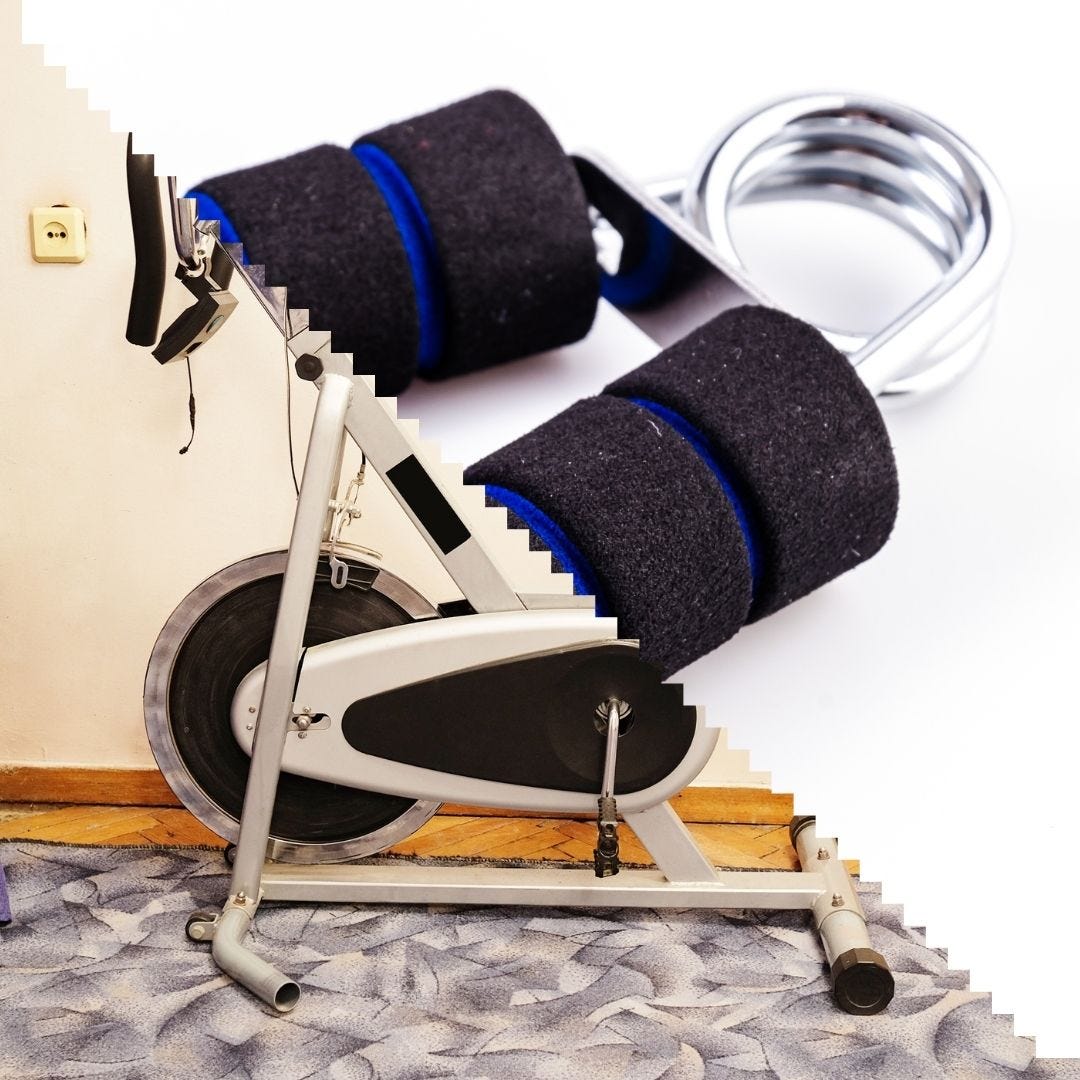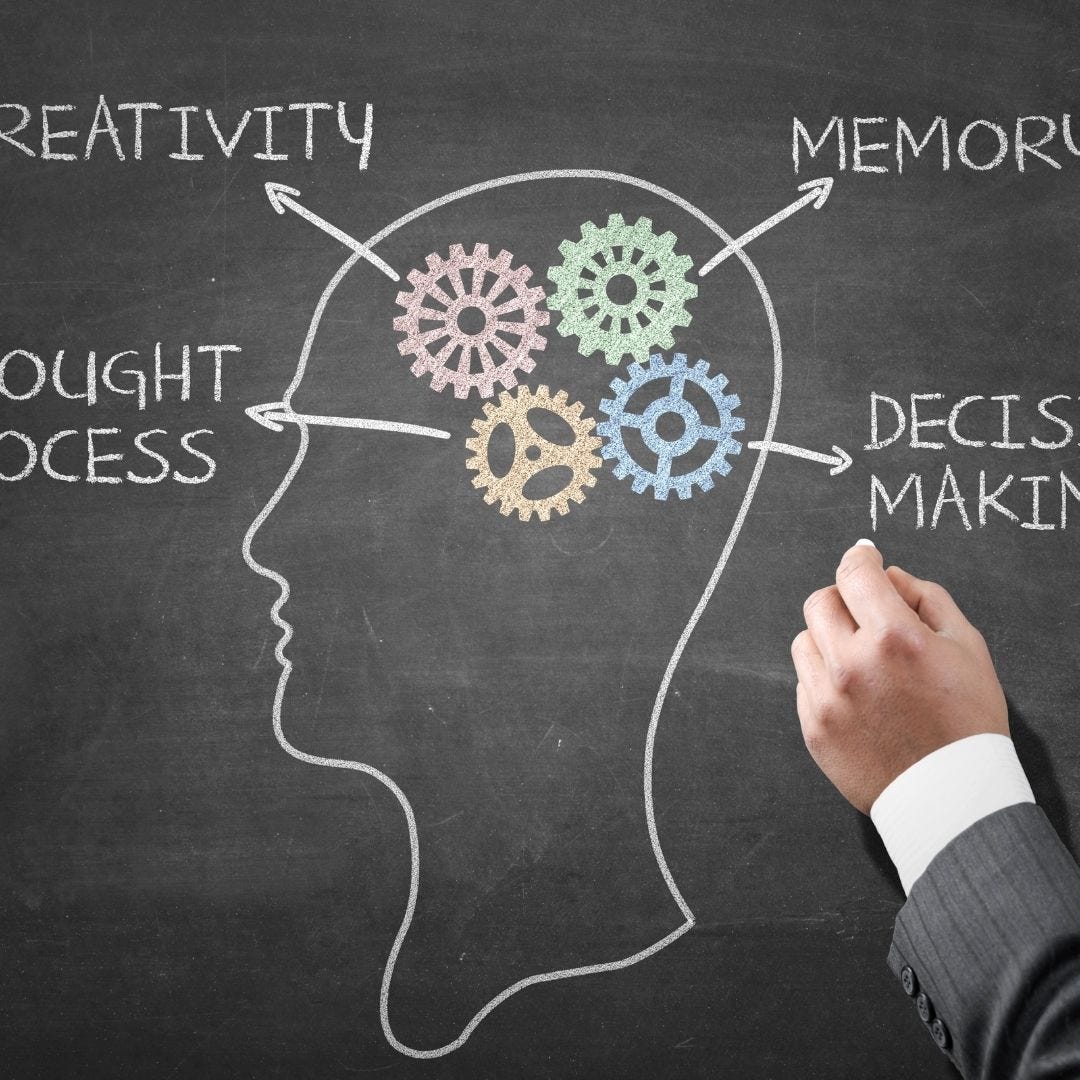If you’re new here—hello, and if you’ve been fanning yourself with us for a while—you know we’re all about turning cutting-edge research into your real-life strategies for thriving in menopause and beyond.
This week, we’re focusing our energies on new research around exercise that can help clear menopause brain fog.
We have all heard of brain fog during menopause—you know, that midlife mental haze, that frustrating sense that your focus has fizzled, or your memory isn’t quite as quick?
It is certainly a thing that happens. But it’s not inevitable. And it’s not permanent. And researchers are beginning to unpack why this happens, and more importantly, what you can do about it—starting today.
While establishing consistent movement habits has been shown to protect the brain over the long-term, this week’s study zooms in on something refreshingly immediate:
Can just one workout improve blood flow to your brain—and help you think more clearly, even in the midst of navigating hot flashes or low energy?
To that end, we’re exploring a powerful clinical trial that measured how two very different (roughly 15-minute) workouts affected brain oxygenation, mental performance, and more in postmenopausal women.
Because sometimes, it’s not about a whole lifestyle plan.
You just need one small shift to kick everything back into gear.
In this edition:
✨ One workout to clear the brain fog (and why it matters)
🚴♀️ HIIE and IRE: The two modes that worked + ways to try them at home
💥 Making brain changes that withstand the heat
✅ Takeaways to move smarter and support cognitive clarity today
One Workout Can Wake Up Your Brain
This randomized controlled study set out to answer two questions that matter to almost every woman navigating midlife:
💡 Can a single workout boost mental clarity and energy right now?
💡 And do hot flashes or fitness level change how your brain will respond?
To answer these questions, researchers had 29 postmenopausal women complete two short workouts on different days: a bike-based high-intensity interval exercise (HIIE) session and a grip-based isometric resistance exercise (IRE) session. They then measured blood flow to the prefrontal cortex—your brain’s command center for focus, memory, and planning.
Here’s what they found:
🔥 Even just one session of either type of exercise boosted brain oxygenation.
🔥 HIIE created a longer-lasting “afterglow” effect.
🔥 Those with higher cardiorespiratory fitness (CRF) had sharper working memory performance.
🔥 And surprisingly? Hot flashes didn’t interfere with those improvements.
ICYMI, that’s big news! Here’s why: Previous studies suggest that frequent hot flashes and night sweats may be linked to brain fog or affect brain function. One possible reason? They often show up alongside changes in heart and blood vessel health. People with more intense or frequent hot flashes tend to have higher blood pressure, stiffer arteries, and more cardiovascular strain.
Over time, this can reduce blood flow to the brain—especially to areas that manage memory and decision-making. That kind of reduced flow has been linked to a higher risk of cognitive decline later in life.
But, in this study, whether or not they experienced intense or frequent hot flashes and night sweats, they saw brain benefits from movement. That means your cognitive vitality doesn’t have to be defined by what else your body may be navigating—it’s influenced more by how you move and how your cardiorespiratory fitness improves over time.
The takeaway? You don’t have to wait for a long-term plan to feel a brain boost. You don’t need perfect hormone balance. You just need to move.
Even if you’re sweating through a meeting or waking up in soaked sheets—your brain will still be ready to respond, grow, and glow.
Why HIIE and IRE? Brain Benefits, Right Now and Over Time
So, we’ve known for a while that physical activity doesn’t just move your muscles—it nourishes your brain. It’s not just about emdorphins and feel good hormones; when you exercise, your body releases powerful growth compounds like brain-derived neurotrophic factor (BDNF) and insulin-like growth factor-1 (IGF-1). Think of these compounds like “Miracle-Gro” for your brain. They help the brain build new cells, strengthen communication between regions, all of which can help you adapt to challenges with more ease.
These brain-boosting effects happen in two ways:
🧠 Immediately—one workout can help sharpen focus and improve memory right after you move
🧠 Over time—repeated workout sessions enable long-term upgrades in how your brain functions and how you feel
And here’s where it gets exciting: the specific types of exercise you do can shape how and where those brain benefits show up. Recently, two types of exercise have gained attention for their potential to support brain and cardiovascular health over time:
High-Intensity Interval Exercise (HIIE)
Goal: Elevate heart rate and stimulate aerobic metabolism with quick bursts—think energy in intervals
Research Example: A cycling session on a stationary bike—two sets of 12 bursts, each burst including 15-seconds at full effort and 15-seconds of recovery, with 2-minute rest breaks in between (as well as a gentle warm-up/cool-down)
Other options: Brisk uphill walking intervals, Stair climbs with slow descents, Dance bursts, Shadowboxing or jump rope intervals, Fast-paced laps around the house, yard, or hallway (try 20-30 second intervals for variety; 30 seconds high intensity, then 30 seconds low intensity)
HIIE has already been shown to improve heart health in postmenopausal women. What’s exciting about this study? It shows that HIIE may sharpen brain function, too—just like it’s shown to do in younger adults. And that even one session boosted brain oxygen and may support working memory when you need it most.
Isometric Resistance Exercise (IRE)
Goal: Activate major muscle groups without joint movement—think strength through stillness
Research Example: A grip-strength session using a handheld device—four 2-minute holds at 30% of your max grip force, with 1-minute rests in between
Other Options: Planks, Wall-sits, Calf raise hold, Isometric bicep curl hold, Wall push-up hold, Static lunge hold, Overhead object hold
IRE is gaining traction for its effectiveness in lowering blood pressure—and research is now exploring how it may support brain function, too. While we knew less before this study about its long-term cognitive impact in postmenopausal women, previous studies has indicated it may improve focus and self-regulation.
Bottom line: These two workouts both hold unique keys to supporting brain vitality during this chapter of life. (And neither require a gym membership!)
And as this new study’s findings show next: whether you’re moving fast (HIIE) or holding steady (IRE), your brain benefits either way.
Brain Changes That Withstand the Heat
The researchers in this week’s study didn’t just want to see if women felt better after exercising—they wanted to understand real-time changes in brain oxygenation, mental accuracy, and the effects of changes in fitness level and hot flash patterns. Here’s what they uncovered:
🧠 Both exercise types improved blood flow to the brain’s “executive” region (the prefrontal cortex)—the area that helps with focus, planning, and calm decision-making. That means better oxygen and nutrient delivery where it counts, especially for things like working memory (your mental sticky note) and inhibitory control (your inner pause button that helps you think before you react).
🔥 HIIE created a lasting post-workout effect—oxygen levels stayed elevated even after the workout ended. IRE showed strong benefits during exercise, but the effect didn’t linger quite as long afterwards.
💪 Cardiorespiratory fitness made a big difference. Women with higher VO₂max (a measure of aerobic fitness) had better working memory performance overall—especially after HIIE.
🚫 Hot flashes did not get in the way. Despite past studies suggesting cognitive changes in women experiencing hot flashes more frequently, this study found no link between those experiences and brain blood flow or performance on thinking tasks.
🧩 The cognitive test scores didn’t show big shifts after just one session—but that’s expected. These kinds of tests often take more time to reflect real change. What did show up right away? Increased blood flow to key brain areas. That’s a sign your brain is getting primed—so with regular movement, those mental gains can start to build. Think of it as laying the groundwork—each workout helps create the conditions for clearer thinking over time.
Realizing The Power of Movement for Brain Health
Sometimes the best brain boost doesn’t come from supplement or sudoku puzzles—it comes from simply moving your body. Here's how to make this research work for you:
✅ Start small—one session counts. Both types of exercise showed brain benefits after a single session of less than 15 minutes. Whether moving fast or standing still, one decision to move is all it takes to spark something new.
✅ Pick the workout that works today. Feeling fired up? Go for HIIE. Low energy but steady? Try IRE. You’re in charge. Your brain will thank you either way.
✅ Use movement strategically. Have a mentally demanding task coming up? Try one of these modes beforehand. That lingering oxygen boost could give your brain extra fuel.
BOTTOM LINE: When you choose fitness over frustration, even hot flashes won’t hold you back. You are still capable of mental clarity, creativity, and calm. You’re not losing your edge—you’re learning to sharpen it differently. That’s what Changing with the Change is all about.
💥 One workout. One shift in blood flow. One boost in brain power. Over time, these moments of movement create an environment where your brain doesn’t just function well—it thrives.
Drop us a line if you try HIIE or IRE this week—and let us know what you notice. (You can always join us every Wednesday for the HIIE class in the EmBODY WELL Virtual Studio!) Your stories fuel the HOT FLASH! The Newsletter community.









